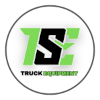Understanding Commercial Truck Leasing
Commercial truck leasing is a popular option for businesses in the transportation, logistics, and construction industries. Leasing allows companies to use trucks for a specified period without the substantial upfront costs associated with purchasing. In this comprehensive guide, we’ll explore the ins and outs of commercial truck leasing, including its benefits, types, process, and considerations, particularly focusing on the needs of businesses in Canada, especially in British Columbia (BC). Commercial truck leasing involves an agreement between a lessee (the business) and a lessor (the leasing company) where the lessee pays to use the truck for a predetermined period. This arrangement offers flexibility and can be more cost-effective than buying, especially for businesses that need to manage cash flow or those with varying transportation needs.
Types of Commercial Truck Leases
Operating Lease
- An operating lease is a short-term lease, typically less than the truck’s useful life. The leasing company retains ownership and responsibility for maintenance.
- Benefits include lower monthly payments and the ability to upgrade to newer models more frequently.
Finance Lease (Capital Lease)
- A finance lease is a long-term lease that covers most of the truck’s useful life. The lessee assumes some ownership benefits and responsibilities.
- At the end of the lease term, the lessee may have the option to purchase the truck at a predetermined price.
Lease with Service Agreement
- This type of lease includes maintenance and repair services as part of the lease agreement.
- Ideal for businesses that want to avoid the hassle of managing truck maintenance.
Benefits of Commercial Truck Leasing
Cost Management
- Leasing requires less initial capital outlay compared to purchasing, freeing up cash for other business operations.
- Predictable monthly payments help with budgeting and financial planning.
Flexibility and Upgrades
- Leases allow businesses to upgrade their fleet more frequently, ensuring they have access to the latest models and technologies.
- Flexibility to scale the fleet up or down based on business needs.
Maintenance and Repairs
- Many leases include maintenance and repair services, reducing the burden on businesses to manage these aspects.
- Improved truck reliability and minimized downtime.
Tax Benefits
- Lease payments can often be deducted as business expenses, providing potential tax advantages.
- Consultation with a tax professional is recommended to understand specific benefits.
Risk Mitigation
- Leasing mitigates the risk of asset depreciation and obsolescence.
- At the end of the lease term, businesses can simply return the truck without worrying about resale value.
The Leasing Process
Assessment of Needs
- Evaluate your business’s transportation needs, including the type of trucks required, lease duration, and mileage.
- Determine your budget and financial goals.
Choosing a Leasing Company
- Research and select a reputable leasing company with experience in commercial truck leasing.
- Consider factors such as lease terms, customer service, and additional services offered.
Lease Agreement
- Review the lease agreement carefully, including terms and conditions, payment structure, mileage limits, and maintenance responsibilities.
- Negotiate terms to ensure they align with your business needs.
Truck Selection
- Choose the truck models that best suit your business operations.
- Consider factors like fuel efficiency, load capacity, and technology features.
Lease Execution and Delivery
- Sign the lease agreement and arrange for the delivery or pick-up of the leased trucks.
- Ensure that all necessary documentation and insurance requirements are in place.
Considerations for Commercial Truck Leasing
Mileage Limits and Penalties
- Be aware of mileage limits specified in the lease agreement. Exceeding these limits can result in additional charges.
- Accurately estimate your annual mileage to avoid penalties.
Maintenance Responsibilities
- Understand the maintenance responsibilities outlined in the lease. Some leases include maintenance, while others do not.
- Regular maintenance is crucial to avoid penalties and ensure the longevity of the truck.
End-of-Lease Options
- Familiarize yourself with end-of-lease options, such as returning the truck, renewing the lease, or purchasing the truck.
- Plan ahead to ensure a smooth transition at the end of the lease term.
Insurance Requirements
- Ensure that you meet all insurance requirements as specified by the leasing company.
- Adequate insurance coverage protects both the truck and your business.
Responsibilities
- Understand the maintenance responsibilities outlined in the lease. Some leases include maintenance, while others do not.
- Regular maintenance is crucial to avoid penalties and ensure the longevity of the truck.
Conclusion
Commercial truck leasing offers a flexible and cost-effective solution for businesses needing reliable transportation without the high upfront costs of purchasing. By understanding the types of leases, benefits, and key considerations, businesses can make informed decisions that align with their operational and financial goals.
At Sustainable Truck Equipment, we specialize in providing customized commercial truck solutions tailored to your business needs. Whether you’re looking to lease a single truck or an entire fleet, our expert team is here to help you navigate the leasing process and find the best options for your business.

